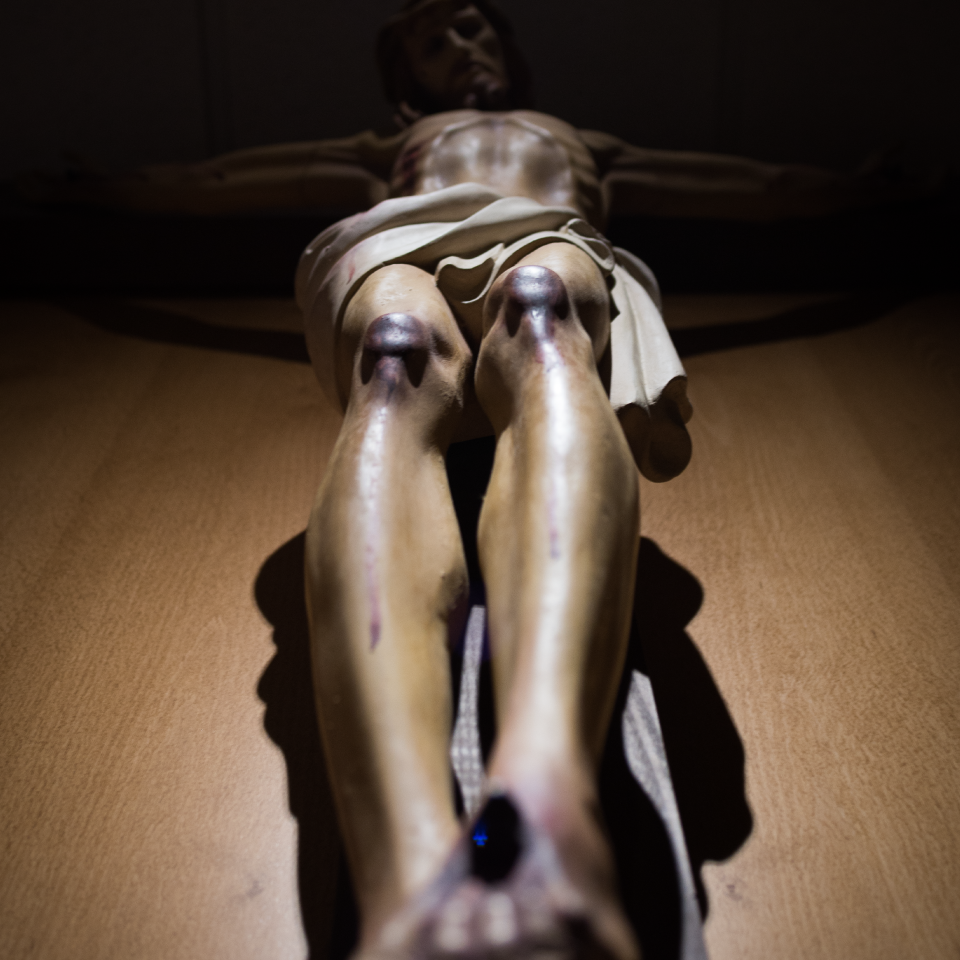We Catholics who grew up straddling the cusp of the conciliar divide may have a vague memory of the phrase “offer it up.” It was advice frequently given by the sisters who taught us our catechisms: “When you are in pain, when you are disappointed, when your feelings have been hurt, offer these things up to the Lord and ask him to use your suffering” that He join it to His own pain on the cross, for the good of others. Offer it as penance for your own sins, or the sins of those who cannot or will not do penance for themselves; offer it for the sick, the lonely, or for their intentions.”
“Penance” has received a bad name over the last forty or so years, largely because it was taught to many in the language of punishment rather than in the language of virtue, offering, and peace.
So, why not, penance? Why not take some of our suffering and — rather than popping a pill — endure it for a bit; live with it and in it, and do something with it; make it worthwhile instead of meaningless.
If we are told to “offer it up” at all today, it is usually in a tone of sarcasm or very weak irony. To we moderns, the concept has come to be regarded — like formerly common practices as “ejaculatory prayers” or a solemn breast-beat — as a quaint throwback to a time when notions of sin and reparation seemed to consume entirely too much of the Catholic sensibility. The idea of “offering it up” has fallen under the false but widely promulgated cultural disdain for something called “Catholic Guilt” which is in truth the marginalizing dismissal of the Catholic conscience.
Far from being a picturesque and nonchalant “There, there” to someone enduring either a minor inconvenience or a larger concern, “Offer it up” is powerful theological advice that comes to us directly from scripture. As Paul writes to the Colossians: “Now I rejoice in my sufferings for your sake, and fill up on my part that which is lacking of the afflictions of Christ in my flesh for his body’s sake, which is the church…”
Pondering the crucifix, and the immensity of what Christ endured, we wonder what could possibly be lacking in his afflictions. But then, gazing upon His outstretched arms, we see an invitation. If we accept that no act in human history can begin to match the power, the healing, and the victory that was activated in the crucified suffering of Jesus of Nazareth, then attaching our own trials (minor or major though they be) to that still-resonating act of generosity and self-abnegation exposes them to all of the good contained in Christ’s sacrifice, and it assists in the salvation of the world.
We know that Jesus’ pain is occurring even in this instant, and that right now — in commingling our suffering with his — we can bring ourselves close to him. Christ’s agony and death released the dew of mercy, dropping from heaven and bathing us all; it was a wholly and holy vertical transaction.
But “offering it up” can speed this salvific action horizontally. Any such offering, even if it is initiated by a feeling of resigned helplessness, has the potential to unleash an expansive love upon the world. It cannot be otherwise. To offer one’s aches and pains, one’s disappointments, for the sake of others is always love-in-action; a redemptive act. There is a particularly true and hardy love that springs from an offering made for the intentions of another.
There is nothing quite like suffering in the wee small hours — when one is loath to wake others with one’s aches and dolors — to make one ponder what it means to “offer it up.” As I have recently been suffering from a one-two punch to the immune system involving an adventurous and very long visit to a local Emergency Room. My pains reminded me of Jesus’ much greater sufferings. Sister Mary Gemma’s voice echoed back to me from my earliest years, “offer it up,” and I did.
In offering my difficulties to the crucified and dying Lord, I asked him to use them for his purposes and, in case he needed direction, I made a few suggestions: for those experiencing acute illness, who were in need in those moments; for the intentions of a friend whose child is suffering from depression; for the sake of a family member with whom I am sadly estranged, but who needs healing — as does our relationship.
Making this prayer, I discovered an easing of my own difficulties. Some of that, perhaps, was thanks to the diversion of focus, (and eventually a bit of morphine) but beyond that there was a true sense of enlargement — a joining of my meager and desperate act, which contained a mere seedling of love, to Christ’s wide, merciful, and all-encompassing love.
And this delivered a simple truth: praying for others, suffering for others, develops a counter-balance to the weight of our own weakness , our distrust and self-absorption. One cannot participate, even infinitesimally, in Christ’s agonies without participating in the expansion of his mercy toward all; a humbling lesson. How does one plead for mercy and deliverance when the Crucifix asks, “ But where is your mercy?”
Our enlightened era looks with skepticism on penance, and believes pain is valueless and must be instantly vanquished. Coupled with a prayer of surrender to the cross of Christ, however, they are enjoined to the power of creative and healing love.
And then, penance, pain, prayer — it is all privilege.
